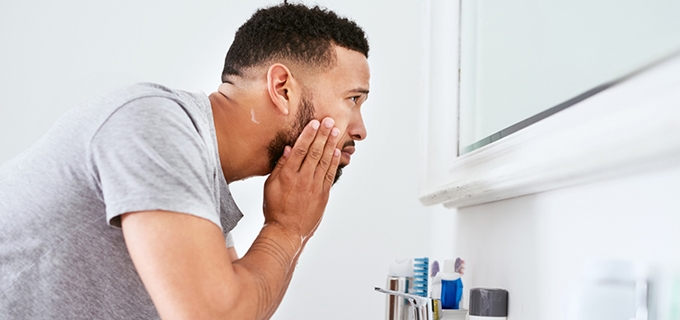Search for a doctor or hospital in your network.


Search for a doctor or hospital in your network.

Get News & Updates Directly To Your Inbox
Taking care of your skin is taking care of your health. Your skin is vital to your body in several ways:
Since your skin protects your body in many important ways, it's important to keep it healthy. To do that, the National Institutes of Health ![]() suggests that you:
suggests that you:
Too much sun is dangerous for your skin. You can get a painful burn and raise your risk for skin cancer later. To protect yourself from skin cancer, the American Academy of Dermatology Association (AAD) ![]() recommends that you:
recommends that you:
The family that plays together may find itself dealing with skin injuries. Caring for them correctly is vital.
Burns
Burns on the skin can be caused by heat, chemicals, electricity, sun or radiation. Scalds from hot liquids and steam, building fires and flammable liquids and gases are the most common causes of burns, says the National Institute of General Medical Sciences.
Burns can cause swelling, blistering and scarring. Burns also can lead to infections because they damage your skin's protective barrier.
Treatment for burns depends on the cause of the burn, how deep it is, and how much of the body it covers. For mild burns that cover a small area, the AAD says to:
For more serious burns, seek medical treatment.
Cuts and Scrapes
Injuries that break the skin include cuts, scrapes and punctures. Minor wounds usually aren't serious, but it is important to clean them. Rinse the wound with cool water. Wash the area around it with soap, but don’t get soap in the wound.
To stop minor bleeding, apply firm but gentle pressure using gauze. If blood soaks through, add more gauze, keeping the first layer in place. Continue to apply pressure until the bleeding stops.
Serious and infected wounds may require medical help. You should also seek medical attention if the wound is deep, you can’t close it yourself, you can’t stop the bleeding, you can’t get the dirt and debris out, or it does not heal.
Stings and Bites
Stay safe from stinging insects by avoiding scented soaps and shampoos and brightly colored clothing. All can attract insects. When you’re outdoors, try to avoid being too close to things that draw insects, including stagnant water, food and blooming flowers.
Use insect repellent. And wash it off with soap and water when outdoor fun is done. Products with DEET can be used on the skin, but you may also want to try products without it. And be sure to look for kid-friendly products for children.
Headed out for a hike? To avoid ticks, stay on cleared trails as much as possible. Cover up your head, arms and legs. Wear close-toed shoes. When you’re back indoors, check for ticks on the skin. They may hide behind the ears or along the hairline. Be sure to remove them the right way. ![]()
Help relieve the itch from various insect bites with ice and a calamine lotion or 1 percent hydrocortisone cream.
Some common causes of a rash include:
You can care for many rashes at home by using gentle cleansers and avoiding hot water and scrubbing. Then let the area air dry and consider an oatmeal bath product or medicated lotion or cream.
Talk to your doctor if the problem continues. See your doctor right away if you:
Blue Cross and Blue Shield of Montana, a Division of Health Care Service Corporation,
a Mutual Legal Reserve Company, an Independent Licensee of the Blue Cross and Blue Shield Association
© Copyright 2025 Health Care Service Corporation. All Rights Reserved.
Verint is an operating division of Verint Americas, Inc., an independent company that provides and hosts an online community platform for blogging and access to social media for Blue Cross and Blue Shield of Montana.
![]() File is in portable document format (PDF). To view this file, you may need to install a PDF reader program. Most PDF readers are a free download. One option is Adobe® Reader® which has a built-in screen reader. Other Adobe accessibility tools and information can be downloaded at https://www.adobe.com/trust/accessibility.html.
File is in portable document format (PDF). To view this file, you may need to install a PDF reader program. Most PDF readers are a free download. One option is Adobe® Reader® which has a built-in screen reader. Other Adobe accessibility tools and information can be downloaded at https://www.adobe.com/trust/accessibility.html. ![]()
![]() You are leaving this website/app ("site"). This new site may be offered by a vendor or an independent third party. The site may also contain non-Medicare related information. Some sites may require you to agree to their terms of use and privacy policy.
You are leaving this website/app ("site"). This new site may be offered by a vendor or an independent third party. The site may also contain non-Medicare related information. Some sites may require you to agree to their terms of use and privacy policy.
Powered by Verint